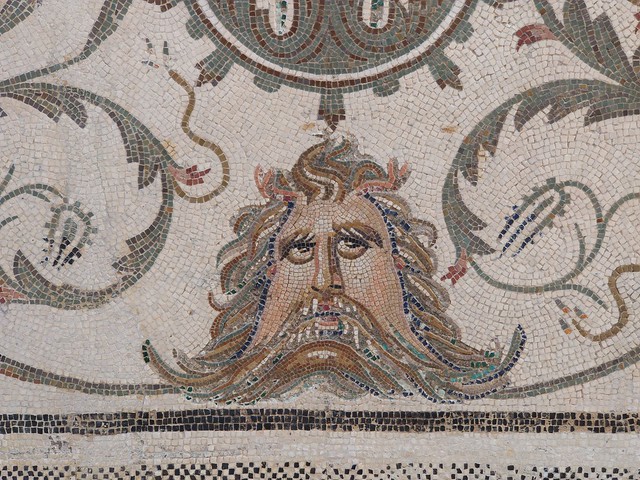The amphitheater seated 35000 spectators, just about the population of El Jem today, which might explain why the place had not been quarried more. At its height, El Jem was second only to Carthage due to its position on the trade route, which would explain the existence of the amphitheater. What I didn't expect to see was the incredible quantity and quality of mosaics in the El Jem Museum. I love mosaics. It's a good thing we had not come here earlier. Forever after, every other collection will pale against those Tunisian mosaics. The question in my mind now is: Was North Africa richer than Europe, or were there more and better artists in North Africa?
We rode the SNCFT train from Sousse to El Jem. Here is a short video and a photo of the Gare de Sousse (Sousse Station). Link here or embedded below.


There were many olive groves along the way. Watch another short video. Link here or embedded below.

The Roman Amphitheatre is visible as soon as one leaves the station plaza.

Here are a bunch of photos of the Roman Amphitheatre including some of the underground passages. Note that the seating has been reconstructed.










The Mosaics at the nearby El Jem Museum were some of the best we've seen. We especially liked the "fight scenes" from battles at the amphitheatre for their artistic merit, not the subject matter.







Dolphins!

There were several excavated Roman Villas next to the museum


Back in El Jem we bought a clutch of "Tunisian Fricassees" a fav vegetarian snack of stuffed, fried dough - "hold the tuna please" - from Fast Food Pepe (not real name).

Followed by a short sunset walk on the very windy beach promenade.



3 comments:
Oh wow, now I have to go to Tunisia to see the mosaics. Although I thought the ones on Sicily and in Madaba were pretty special.
There seems to a lot of dough, which I don't eat.
The mosaics are beautiful! At first I thought they were paintings until I read the captions and enlarged the pictures. They are very spectacular!
These mosaics are amazing! @Kathy, I'll come with you, when the Bardo reopens.
Post a Comment